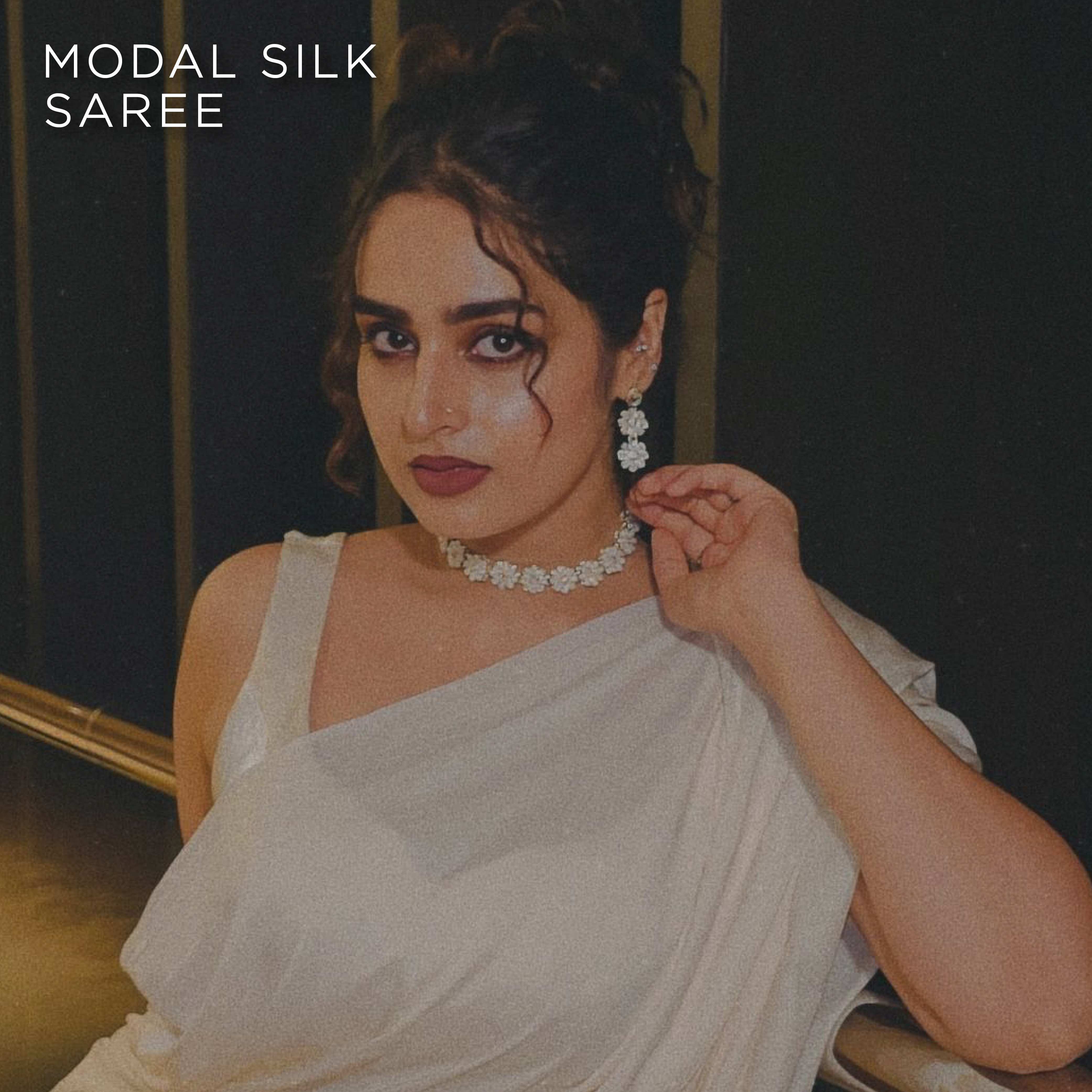Practiced for centuries by the weavers of Bengal, Jamdani is a richly cultured tradition of India that has stood the test of time and how! It is an intricate art of weaving floral, geometric and abstract designs on a base of very fine cotton muslin, silk or linen, in such a way that the beautiful motifs appear to be floating on a sheer backdrop of the base, creating an ethereally dazzling effect. The word ‘Jamdani’ has its roots in the Persian language, wherein ‘jam’ stands for flower and ‘Dani’ stands for vase. ‘Dhakai’ is the Bengali name of this magnificent art, as it first originated in Dhaka, Bangladesh.
 |
 |
 |
The Intricacy of the Process
Weaving a Jamdani saree is quite a labor-intensive and time-consuming process, which is why it is one of the most prized fabrics in the world. Its exquisitely unique motifs are created directly on the loom using a discontinuous weft technique. Intertwined with fine threads of gold and silver, a wide range of patterns are created on the saree on a brocade loom, which employs the supplementary weft technique along with the standard weft technique. The function of the standard weft is to create a fine and sheer fabric and that of the supplementary weft is to add intricate patterns to it with its thicker threads. The weft threads are interlaced with fine bamboo sticks using individual spools to craft each supplementary weft motif manually.
 |
 |
 |
The Embellishment with Elegant Motifs
The most interesting fact about the weaving of Jamdani sarees is that the motifs are not sketched or outlined on the fabric, instead they are sketched on a translucent graph paper, which is placed beneath the warp. Some of the most frequently used motifs on handwoven Jamdani sarees are ‘butidar’ which are small flowers, ‘jalar’ are the motifs that cover the entire saree, ‘fulwar’ are flower motifs arranged in straight rows, ‘panna hajar’ means a thousand emeralds, ‘kalka’ are paisley motifs, polka spots are called ‘duria’, ‘tersa’ are diagonal patterns and ‘charkona’ are the rectangular motifs. |
 |
 |
Different Types of Jamdani Weaves
The technique of weaving Jamdani sarees differs from region to region. The finest range amongst these is the Dhakai Jamdani saree from Bangladesh. The weaving technique requires the following of an elaborate process minutely, focusing on each excruciatingly small detail. This type of Jamdani sarees require a duration of somewhere between nine months to a whole year to weave. The Shantipur Jamdani from the Shantipur district of West Bengal has a fine texture and is adorned with beautifully striped motifs. Then there is the Dhaniakhali Jamdani saree which has a tighter weave and bolder colours with contrasting colours. As Jamdani sarees are native to Bengal, most of thei designs are associated with Bengali culture, mostly portraying a popular tale or representing a simple village life.
 |
 |
 |
All about Chidiyaa Handwoven Jamdani Sarees
Chidiyaa’s story of handwoven Jamdani sarees is a perfect blend of ineffably unparalleled craftsmanship intertwined with the unrivalled charm of tradition as well as modernity. Our meticulously crafted Jamdani sarees made with utmost skill, precision and rhythm, created directly on the loom with a discontinuous weft process, are your ideal companion for all the important celebrations and occasions of your life. We have a wide range of handwoven Linen jamdani sarees as well as Jamdani silk sarees to make you gracefully and sophisticatedly stand out from the crowd!
 |
 |
 |
 |
 |
 |
 |
 |
 |







